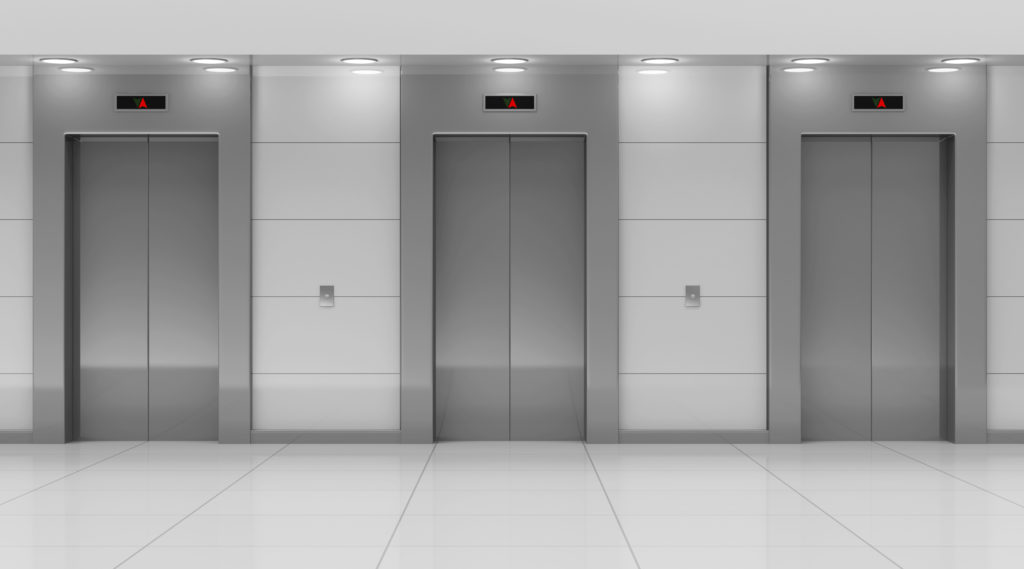
Based on data from the U.S. Department of Labor Statistics, 30 people die and 17,000 are seriously hurt in incidents on elevators and escalators each year. Most recently, issues in Washington, Texas and North Carolina are calling into question methods that are used to regulate the industry and keep riders safe.
Washington
Although Washington state law requires every elevator and escalator in the state to be inspected annually, more than half of the states’ 18,000 conveyances were not inspected in 2018. What’s worse, thousands of conveyances had not been inspected for two or three years, and investigators found three that had not been inspected in more than 10 years. The backlog has been blamed on a building boom generating more elevators and escalators in need of annual inspections. The state has also had a hard time keeping its inspectors from taking better-paying jobs with construction firms.
Next year’s audit may show an improvement now that additional funding allows the state to pay its inspectors higher salaries, and legislators approved more money to hire conveyance inspections. Technology is also allowing inspectors to spend more time in the field, rather than back at the office filling out paperwork.
North Carolina
The situation in North Carolina is a similar one. CBS 17 found that thousands of elevators are overdue for those inspections. This is shocking given that the North Carolina Department of Labor has full-time employees who have the responsibility of inspecting the 27,000 elevators and escalators across the state once per year. While the department does aim to meet that goal every year, a recent analysis of the inspection data for those devices found that’s not happening. As of late September, about 14 percent of elevators were overdue for inspection.
The biggest problem the North Carolina Department of Labor has is recruiting and hiring qualified elevator inspectors. To become an inspector, you need five years’ experience in the trade and become certified if not already. An added problem is that the private sector typically pays better. Starting pay for inspectors is $53,083.
Elevator owners are required to have contracts to maintain them, and the state will respond if you call about an issue. But the inspectors are supposed to serve as the extra set of eyes to ensure safety for the public. The department is aiming to get better at recruiting and retaining employees and has hired six new inspectors this year to meet this goal.
Texas
The story is similar in Texas, where a nurse was nearly crushed to death in an elevator at a Fort Worth hospital. State investigators blamed the incident on worn-out brakes caused by lack of maintenance. Since 2004, nearly half of all elevator accidents in Texas happened in Dallas and Fort Worth. About one-third of those occurred at hospitals, which typically have elevators running day and night, particularly in urban areas.
A WFAA investigation found significant problems in the state’s program to ensure the safety of Texas’ 40,000 passenger elevators — including missed inspections, neglected elevators, shoddy record-keeping and failing oversight. A major problem is that the state has no inspectors on its payroll. Although the state does have a chief inspector and a deputy based in Austin, neither actually completes inspections. So who does? Texas issues licenses to approximately 150 independent contractors to inspect elevators across the state. Some have more training than others and are of varying quality and experience. But what is the minimum required training to become an elevator inspector in Texas? A $50 state fee and a three-day class, records show. Needless to say, this is not enough training, when issues with an elevator can quickly become life or death situations.
Texas Department of Licensing and Regulation enforces the annual inspection requirement. But analysis of the state’s own data shows 5,617 — or 14% — of all elevators are overdue for their annual inspection – some by years. There are a lot of building owners out there who are either unaware that they need to have their elevators inspected or that don’t care. WFAA also found numerous errors in the state’s elevator database, which is littered with elevators that no longer exist, as well as some inspectors faking inspections.
Conclusion
Lack of trained inspectors, insufficient funding, major inspection backlogs, and incorrect databases seem to be common themes amongst the three states- and likely in many others as well. Increased government funding, adequate training programs, increased inspector accountability, and better inspector vetting processes must all be put in place in order to see drastic improvements in elevator safety across the country.
FIELDBOSS stays current on industry trends to keep you informed on what’s happening in the elevator world. Read our blog and sign up for our newsletter for all the latest news.
#Elevatorregulations #Elevatorsafety